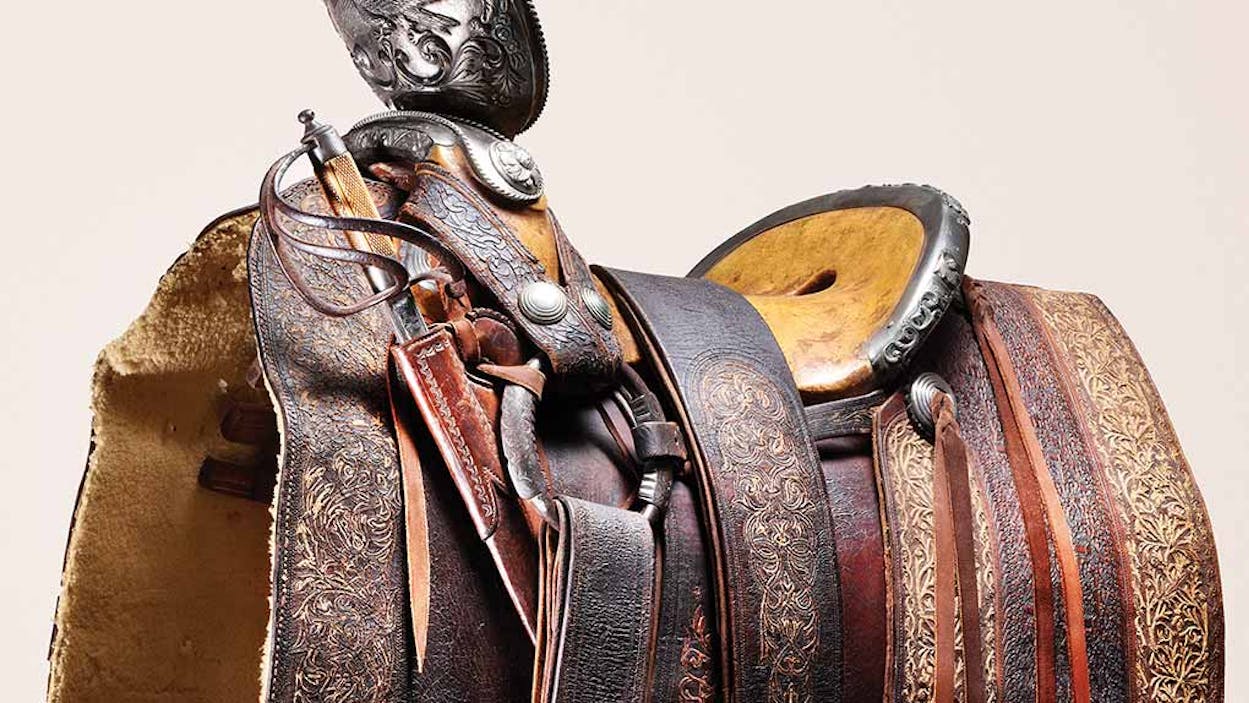
The first Texas ranchers were the men and women whom José de Escandón brought from the interior of Mexico to settle along the Rio Grande in the middle of the eighteenth century. Starting in 1749, these colonists laid the foundations of a Tejano culture that has survived for centuries. The families that founded Escandón’s towns of Mier, Reynosa, Camargo, Revilla, Laredo, and Dolores took up land grants on the north side of the river and started raising Longhorns on the grasslands that stretched toward the Nueces 75 years before Stephen F. Austin’s Old Three Hundred arrived on the Brazos.
The Tejano settlers of the Lower Rio Grande Valley created a frontier culture that was quite different from that of interior Mexico. Texas A&M historian Armando Alonzo has described it as hardy, resilient, and adaptable, shaped by a difficult environment, hostile Indians, radical shifts in markets, changes in sovereignty, and, in later years, conflicts with Anglos. The land produced a pragmatic people who have retained their religion, their language, and their knowledge of livestock for generation upon generation.
One aspect of Tejano culture in the Lower Valley is that the Rio Grande has never divided the families who live on either side of it. The original Escandón colonists intermarried, and names like Ballí, Cantú, Guerra, and Vela have appeared on deeds on both sides of the river for more than 250 years. The network of old families stretches along the river from Laredo to Matamoros, with tentacles that reach north to San Antonio and south to Monterrey.
Enrique Guerra, who is 85 years old, is the twelfth generation of his family to live in the Rio Grande Valley. He is a direct descendant of Ignacio Guerra, who came with his brother Francisco from Cerralvo, Nuevo Leon, to settle in Mier, in 1753. The Guerras received land grants in what is now Starr County, and their descendants have played important roles on the Texas side of the river ever since.
Manuel Guerra opened a store in Roma in 1877 and dominated Starr County politics until his death, in 1915. Manuel’s cousin Deodoro Guerra, Enrique’s grandfather, was the sheriff of Starr County for many years. Three of his sons, including Enrique’s father, established a store in the new town of McAllen, down the river from Roma, in 1908. The storefront, with its sign reading “D. Guerra and Sons,” still stands in McAllen.
As a young man, Enrique started raising criollo cattle, or Longhorns, on his San Vicente Ranch, in northern Hidalgo County. Since then he’s tried Brahmans, Brown Swiss, Beefmasters, Herefords, and Charolais, among others, and now he is back to Longhorns, trying to rebuild a herd that has been decimated by drought. Guerra’s second love, after cattle, is the art and artifacts of the Spanish borderlands. He has surrounded himself with eighteenth- and nineteenth-century paintings, religious objects, weapons, costumes, and other items from both sides of the Rio Grande. “My mother was a collector, and her brother was an antiques dealer,” he told me. “They made trips to Mexico in the thirties and forties, when old families were selling good things, and I sometimes went with them. I inherited their regard for beautiful objects.” The Guerra family collection is the most significant of its kind in Texas, and some of its prize items are now on exhibit at the Briscoe Western Art Museum, in San Antonio.
One of the jewels in the Briscoe exhibit is a magnificent saddle that was made around 1870 for Enrique’s great-grandfather José Maria Gomez Cavazos, a major landholder on both sides of the Rio Grande. Guerra describes it as a haciendado saddle, the type used by wealthy Mexican landowners, with most of the tree exposed. The horn is a silver disk that is nine inches in diameter, tilted at an acute angle that gives the saddle an insouciant air, like a hat worn on the back of the head. The disk is engraved with the Mexican eagle perched on a cactus with a serpent in its mouth on one side and the American bald eagle, wings outstretched in flight, on the other. The American eagle’s hooked neck is reminiscent of the eagle that appeared on U.S. silver coins in the mid-nineteenth century. Above it are the owner’s initials, “JG.” The saddle’s cantle is trimmed with silver, and its iron stirrups are silver-plated. Its skirt and stirrup leathers are embroidered in intertwined floral designs made with pita, or cactus fiber. The tree was either made in the United States or England, as the words “Warranted Superior Cast Steel” are visible on the cantle above two medallions indicating prizes won long ago at international exhibitions. A maker’s rubric, a stylized “GR” surmounted by two smaller characters, is carved into each side of the skirt. Guerra pointed out that the saddle is the work of a combination of craftsmen: a tree maker, a saddlemaker, a blacksmith, a silversmith, and an embroiderer.
Gomez died in 1896 at the age of 61, and the saddle passed to his oldest daughter, Juana Gomez Cantú de Fernandez, and then to her daughter, Judith Fernandez Gomez de Guerra, and then to Judith’s son, Enrique. The saddle, with the dual eagles on its saucy horn, is the perfect symbol for the binational character of the Guerra family, their border domain, and the Tejano culture that produced them.
Briscoe Western Art Museum, 210 W. Market, San Antonio (210-299-4499). Open Tue–Thu 10–4, Fri–Sun 10–5.







